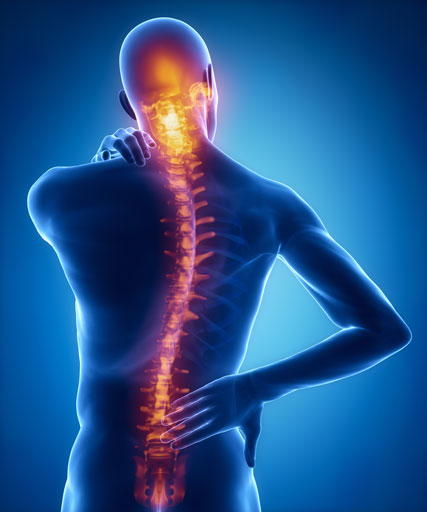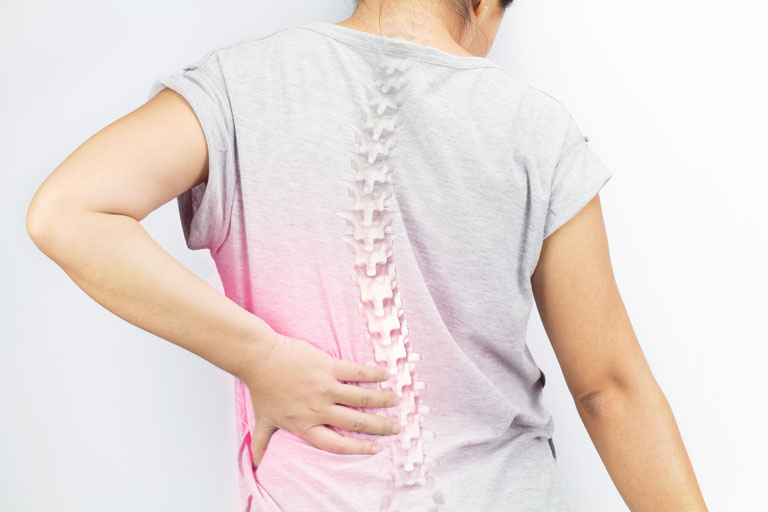
Disrupting the alignment of the back in nearly 2% of the American population, scoliosis is causing many to suffer quietly. Many people are unaware of what it is and just how it affects the body. Let’s take a look at what scoliosis is, how it affects the body, possible treatments options and why surgery might not be the answer for this condition.
What is scoliosis?
As stated earlier, scoliosis is a condition of the back that affects the alignment. The human body has a natural curvature in the spine, however it is not natural for the curve to be side to side or lateral. If the curve is lateral and 10 degrees or more, then it is considered scoliosis. Sometimes, only section of the spine is affected, while other times it can extend from region to region.
The curvature is a result of a subluxed joint and annulus on the concave side. The curvature plays a significant role in changing the way the spine does its job. When we see someone bend forward, we see their body move straight down.
We see this same motion if the person has a straight spine or a scolioticone. You can imagine that when a person with scoliosis bends, the spine is not moving in the same manner as if the spine was straight. The curved spine must pivot on the subluxed levels and the structures on the opposite side must move more than normal to allow the desired spinal movement.
How does it affect the body?
You might surprised to know that scoliosis not only affects the back, but it comes with some very uncomfortable side effects. Patients have reported headaches and pain in the neck, hips, legs and knees. Some people may also suffer from radicular or nerve pain, problems with digestion and some females also have menstrual cycle irregularities.
Scoliosis can also have major effects on a person’s posture and symmetry of the spine. Often times it can lead to an imbalanced appearance in the shoulders, hips, shoulder blades and ribs. You may also noticed a shift in the head, torso and pelvis. The more severe the curve, the more likely of having more serious side effects.
Another side effect people suffering from scoliosis may deal with is balance issues – especially when eyes are closed. Pair that with osteoarthritis that is also common, it becomes a bad combination for fractures from falling down at any age.
Long term side effects are not good either. Scoliosis can lead to osteoarthritis and degenerative changes in the spine, hips and knees. If a case is severe enough, internal organs may also be compromised or severely damaged.
Treatment Options
There are various treatment options when it comes to scoliosis and they will all depend on the severity of the specific location and degree of the spine’s malalignment. For some, a scoliosis brace might be helpful and surgery is sometimes an option.
At our medical office in Scottsdale, our treatment for scoliosis is unique. We use motion patterns that are normalized through proprietary injection methods and exercises with the improvement of the spinal curvature. We almost never recommend surgery for scoliosis and believe mobilization is the proper treatment paradigm. We highly recommend a consultation with one of our physicians if you are experiencing pain from scoliosis.

Why is surgery not often recommended?
The main reason surgery is not often recommended in the treatment of scoliosis is because it is rarely effective. Surgery may involve replacing the spinal discs with bone chips harvested from the hip, while using a combination of rods, hooks, and screws to hold the spine in place as it fuses solid. Often, this type of surgery can lead to a permanent decrease in spinal flexibility and ranges of motion. The surgery is painful, expensive and invasive. Even still, additional re-operations are necessary if the spine doesn’t fuse properly. It is possible to not achieve the results and freedom from pain you might be hoping for if you opt for surgery.
When it comes to scoliosis, your best bet is not to wait and see what happens. You want to be on top of this condition as it can have long lasting and dire consequences if not treated properly. Having a doctor create and maintain a proper treatment plan for your specific issues is key to staying on track with your spine. You may need to find other ways to manage the chronic pain, while your spine is being evaluated.
Comments are closed.
